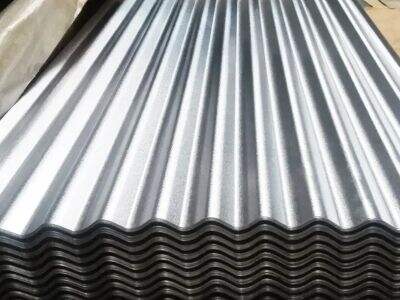هل قمت يومًا بفحص لوحة فولاذية مُنحنيّة؟ بالطبع، قد تبدو وكأنها لا تعدو أن تكون سوى قطعة عادية من المعدن المُنحني، لكن العلم هو ما يجعلها مثيرة للاهتمام. هذه الانحناءات، أو التعرجات، تساعد في جعل اللوحة الفولاذية أقوى وتمنعها من التلف بسرعة. دعونا نستكشف المفاهيم الميكانيكية التي تجعل ألواح الفولاذ المُنحنيّة مثيرة للاهتمام.
تتميز الألواح الفولاذية المُنحنيّة بصفوف من التجاويف الشبيهة بالموجات تمتد عبر طول اللوحة. هذه الانتفاخات توزع الوزن والقوة بشكل متساوٍ عبر وجه اللوحة. وهذا يوفر قوة وثبات أكبر. كما أن شكل التعرجات يضمن عدم انحناء اللوحة أو كسرها تحت حمل ثقيل. لهذا السبب، فهي خيار شائع للمشاريع التي تحتاج إلى تحمل وزن أكبر.
التعرجات في ألواح الفولاذ – كيف تساعد؟
لوحات الصلب المموجة لديها تصميم خاص يجعلها أفضل في تحمل الوزن بطرق أكثر مما تتصور. أولاً، تعني التعرجات أن اللوحة لديها مساحة سطح أكبر لانتشار الحمل على منطقة أوسع. هذا يساعد في تقليل الضغط على نقطة واحدة من اللوحة، مما يقلل من خطر التلف.
تؤدي الحواف والأخاديد في لوحات الصلب المموجة أيضًا وظيفة كأعمدة دعم، مما يوفر قوة إضافية. هذه الدعائم تجعل اللوحة مقاومة للانحناء، التواء وأنواع أخرى من الإجهادات، مما يضمن قدرتها على حمل الأحمال الثقيلة دون الكسر.
التطبيقات العملية للوحات الصلب المموجة
تُستخدم لوحات الصلب المموجة بشكل شائع كمواد بناء، حيث تُستخدم لحمل أحمال كبيرة. على سبيل المثال، يتم استخدامها غالبًا في بناء الجسور، الأنفاق، القنوات والجدران. كما أنها قوية ومتينة بما يكفي لتحمل وزن المرور الكثيف، ضغط المياه وأحمال التربة.
بالإضافة إلى البناء، فإن المموج صفائح فولاذية/لولب تُستخدم لصنع خزانات التخزين والهياكل الصناعية الأخرى، ويمكنها تحمل الظروف الصعبة والبيئات القاسية، كما يمكن استخدامها لتخزين السوائل والحبوب وغيرها من المواد.
جمال تصميم الشكل المتموج
تصميم ألواح الشكل المتموج فعال لأنه يوزع الضغط والتوتر بشكل فعال. عندما يقع الوزن على لوحة فولاذية مسطحة، فإنه يركز القوة عند نقاط معينة، مما قد يكون مشكلة. الألواح الفولاذية المموجة من ناحية أخرى توزع الحمل على نقاط متعددة، مما يقلل من احتمالية حدوث الضرر.
بالإضافة إلى ذلك، فإن الحواف المرتفعة والمنخفضة تعمل كدعامات صغيرة، مما يخلق هيكلًا أكثر قوة لن ينهار تحت الضغط. الدعم الإضافي والساحة السطحية الأكبر يجمعان بينهما ليجعلان ألواح الفولاذ المتموجة مقاومة للغاية حتى في أصعب الظروف.
دور الفيزياء في تعليم المهارات اليدوية
من خلال فهم المفاهيم الميكانيكية المرتبطة بالألواح الفولاذية المموجة، يمكن للمهندسين والمعماريين اتخاذ قرارات حذرة بشأن متى استخدامها في بناء المباني. يمكنهم تصميم المباني للاستفادة من الخصائص الفريدة لل الألواح الفولاذية المموجة لتحمل الوزن المناسب والتكيف مع البيئة.
وفهم هذه المفاهيم الميكانيكية قد يساعد المصممين على تطوير استخدامات جديدة مثيرة لهذه الألواح في قطاعات أخرى أيضًا. سواء كنت مهندسًا معماريًا تصمم نوعًا جديدًا من الجسور أو صاحب عمل تخطط لزيادة التخزين، هناك العديد من الاستخدامات عندما يتعلق الأمر بقوة الألواح الفولاذية المموجة.


